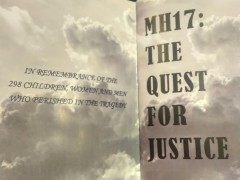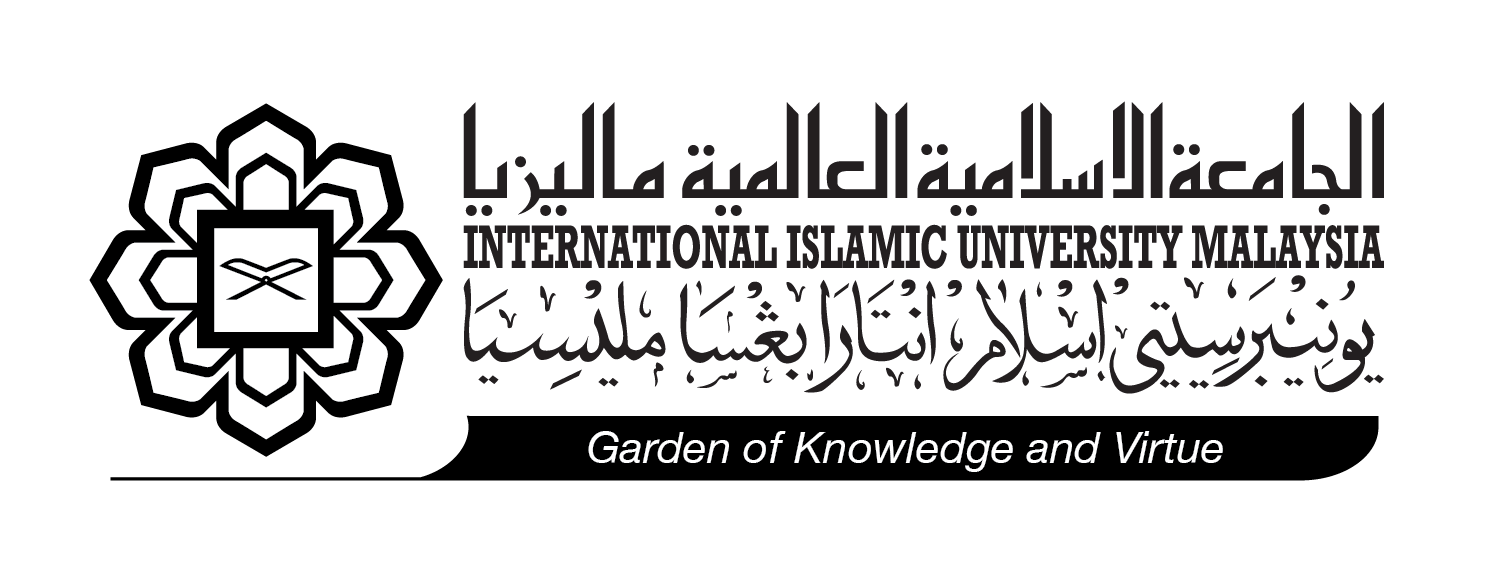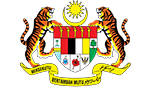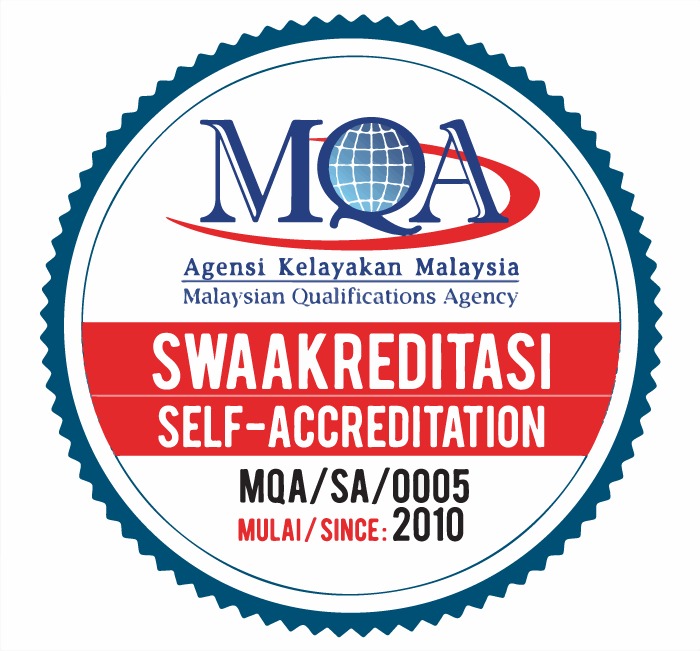News

MH17: THE QUEST FOR JUSTICE - CONFERENCE REPORT
Date : 28 October 2019
Reported by : Roslan Bin Rusly
Category : News
Tweet This
MH17: THE QUEST FOR JUSTICE
CONFERENCE REPORT
Date: 17 August 2019
Venue: Main Auditorium, International Islamic University Malaysia, Gombak
INTRODUCTION
On Saturday, 17th August 2019, an international conference, “MH!7: The Quest for Justice” was held at the International Islamic University Malaysia (UIIM) in its Main Auditorium in response to the Joint Investigation Team (JIT) Report made public in June. The Conference was jointly organised by the International Movement for a Just World (JUST), the Perdana Global Peace Foundation (PGPF) and the Montreal based Centre of Research on Globalisation (CRG) in collaboration with UIIM. The JIT Report had accused three Russian nationals and a Ukrainian of having shot down the MAS flight MH17 overflying the war zone of East Ukraine on July 17th, 2014..
The aim of the Conference, as the name suggests, was to try and see that justice is done. It determined the flow, structure and sub-titles of the six sessions. It was a whole day conference, starting at 8.45 am and winding up around 7 pm. The pre-lunch sessions of the screening of the documentary, “ MH17: Call for Justice”; “Review of Evidence and Background’ and” The Legal Dimension” were followed after lunch with sessions giving the whole tragedy a human dimension: “Ground Zero: The Unsung Heroes” and “In Memory”, talks by Malaysians on the ground, firstly, in Donetsk, East Ukraine, where the aircraft fell and, secondly, in The Hague where the then Malaysian ambassador to the Netherlands was tasked with identifying and the logistics of arranging for the return of, the remains of the Malaysian victims, home. The final session was an attempt at drawing a framework for further action to meet the main objective of the conference.
International experts, who have been following the progress of the JIT and the Dutch Safety Board (DSB) Reports all speaking before lunch making their cases to together draw a picture of flawed investigations led by the Netherlands. The decision to leave the Netherlands to lead the investigations were agreed upon because a majority of the victims were Dutch.
THE OPENING
The conference opened with introductory remarks by Dr Chandra Muzaffar, President of the International Movement for a Just World (JUST). He spoke of the objective of the Conference given the state of global geopolitics where the hegemon has no qualms about lying and staging false flag events to engineer a public consensus for war as in the Gulf of Tonkin incident and the Iraq invasion where lies were blatantly orchestrated to justify the Vietnam war and the invasion of Iraq, respectively.
Officiating the event was Tan Sri Dzulkifli bin Abdul Razak, the UIIM Rector, who made available to the organisers the auditorium for free.
SESSION 1: Documentary -- Call for Justice
The body of the Conference began with the screening of a documentary followed by questions and answers from the floor. The director of the Film Ms Yana Yerlashova and the Malaysian sound expert interviewed in the documentary, Mr Akash Rosen, who declared the sound bites used by JIT as evidence to charge the four accused had been tampered with. During the Q and A session which ensued, it emerged from the floor that Malaysia refused to lead the investigation because the authorities were busy with the disappearance of MH370 which happened in March 2014. Significantly, too, an answer elicited by a question to Ms Yerlashova drew the distinction between the Dutch Safety Board (DSB) and the Joint Investigative Team (JIT) investigations, the latter included Malaysia only later. The former investigated the technical aspects of the shooting while JIT conducted a criminal investigation. Another important information that emerged during the session was that of the black-boxes of MH!7 which were retrieved by the East Ukraine separatist rebels and handed over to Malaysia who then brought them to Farnborough , England, to be deciphered. Apparently a preliminary report was given to the Malaysian government but an unanswered question remains as to whether Malaysia was given a full copy of the black boxes’ records. Yana asked whether the black boxes were returned to Malaysia, the answer to which was “NO” because all evidence was kept by the Netherlands as lead investigator. Ms Yarleshova concluded that there is a need for a neutral investigation done by a neutral country.
SESSION TWO: Review of Evidence and Background
Speaker 1
Professor Michel Chossudovsky of the CRG then kicked off Session 2, which was moderated by Tan Sri Ahmad Fuzi Haji Abdul Razak, former Secretary-General of the Ministry of Foreign Affairs Malaysia. Chossudovsky lamented the state of the contemporary world where “Lies have become the consensus” thus indicating his position quite unequivocally. He contended that the US Administration fronted by Obama’s Secretary of State, John Kerry, carried a narrative that was to suit their lies. Even without hard evidence their immediate action was to pin the blame on Russia. Meanwhile, both the DSB and JIT investigations had relied on information from the SBU, the corrupt Ukraine Intelligence outfit. All other evidence not from the SBU were discarded.
Professor Chossudovsky then pointed out that there was a second aircraft flying overhead at the same time. This is according to a BBC report which carried eyewitness accounts but has since been removed. He pointed out that there were bullet holes in the fuselage of MH17, which was later corroborated by the next speaker, Peter Haisenko. A BUK missile -- identified by the JIT report as the weapon used --- cannot make these holes. The third point raised as evidence that the JIT report is flawed is the fact that there was no BUK missile fired in the vicinity at the pertinent time because it would have left a visible vapour trail that would remain in the air for at least 10 minutes before evaporating. There is no satellite evidence of such a trail. Professor Chossudovsky concluded from this that a BUK was never fired and that, therefore, MH17 was not downed by a BUK missile. There was also no evidence that the separatist rebels had deployed BUK neither before nor after the event.
Another absurdity pointed out by Professor Chossudovsky was the position adopted by the JIT before Malaysia was allowed to join the body that all JIT decisions should be by consensus. This gave all four members of the JIT at that time – Netherlands, Belgium, Australia and Ukraine --- a veto each. Since there were grave doubts from the outset about the role of the Ukrainian authorities in the July 17th incident, this implied that Ukraine could disallow all evidence except those from its SBU.
He ended his presentation with the question, “Was the shooting of MH17 deliberate?” to which he answered that one can only speculate since there is no proof.
Speaker 2
The next speaker was Mr Peter Haisenko a German pilot formerly of Lufthansa Airlines with considerable flying hours under his belt flying wide bodied jets. He went for the jugular by asserting that it was not a BUK that brought down flight MH!7. BUK was not intended to bring down commercial airplanes but rather small fighter planes. It was not a BUK for three reasons Firstly, because there was no loud boom heard nor a vapour trail sighted. Secondly, there were no exit markings of BUK shrapnel. The circular holes present in the wreckage of the MH17’s body could not have been made by the BUK system. He further pointed out that a commercial aircraft would not disintegrate in midair without an internal explosion. Furthermore, had a BUK missile hit such an aircraft, it would not crash immediately but rather continue flying for a longer time. Thirdly, there is some evidence suggesting that another aircraft, a SU-25, was present. He asked why the JIT Report carried blurry pictures when there are available sharp, focused pictures ?
Mr Haisenko concluded that there must be a new, neutral investigation because the JIT Report is technically flawed.
Speaker 3
The third speaker in Session 2, Professor Kees van der Pijl from Amsterdam dealt with the geopolitical and economics contexts of the tragedy. He began his presentation by praising the Malaysian Prime Minister's courage when declaring he was not convinced given the evidence presented and the powers behind the JIT Report. The JIT Report says there was murder. If there is murder what is the motive, the Professor asked. The geopolitics and economic context would provide some answers.
Before addressing the geopolitical context to establish motive Professor Kees Van der Pijl touched on the DSB investigations which, he remarked did not identify who brought down MH17. He argues that the DSB itself is compromised. Established in 2010 it cannot report on anything that is against the interest of the Netherlands and anything that might mar the relations between Netherlands and NATO and the EU. The choice of people sitting on the DSB suggests that there was intention to curb its independence.
Professor van der Pijl touched briefly on the missiles and then went on to suggest that the 1.3 tons of lithium-ion battery that was carried by MH17, a commercial flight was a threat to air safety. Who allowed this to happen? A question not investigated by the DSB. He charged, too, that other than the SBU the information taken into consideration was from Bellingcat, a proven unreliable source of information. The question asked was why were more reliable sources of information not used? Why were national intelligence outfits, other than the SBU, not tapped for information?
Professor van der Pijl also asked why the JIT rejected the information offered by a German investigator, Mr Joseph Resch. His extensive documents amounting to 10 packages were rejected. He argued that the investigator is now a man afraid for his life hence his demand that the handing over of the documents must be in the presence of the media. According to Professor van der Pijl, Resch has now offered the information to Malaysia and Russia but to date there has been no response.
He then arrived at the geopolitical context citing the “race between the US and post-USSR Russia where the prize was Ukraine. Crimea which hosts Ukraine’s most strategic port voted to be reintegrated into Russia. On 16 July 2014 US declared this was unacceptable and imposed sanctions on Russia but the Europeans were reluctant to follow suit given their reliance on Russian gas.
(Then the Middle East happened and the jostling for oil and gas pipelines to supply Europe. Whose territory would the pipelines pass through?)
The Question and Answer Session that followed the presentations raised the need to make mandatory the closing of airspace over war zones to commercial flights. According to Professor van der Pijl, this issue was addressed in the 2nd part of the DSB Report. As to the restrictions on carrying lithium-ion batteries on commercial flights the Professor pointed out that within two weeks after the MH17’s downing the US banned lithium batteries on commercial flights.
SESSION 3: The Legal Dimension
The last session of the morning, Session Three dealt with the legal dimensions of the shooting down of MH17. Moderated by Professor Datin Dr Mary George of University Malaya’s Law Faculty, the first speaker, Mr John Philpot of Canada began by stating that warfare is tansitioning into lawfare, the continuation of war into law. Mr Philpot felt that the JIT Report was unfair and biased with no respect for the Rule of Law. He pointed out the use of “could” to establish guilt cannot be the basis for making a charge in law because the word “could” suggests a measure of doubt.
His assertion was that the JIT Report is primarily flawed. Firstly, the initial non-inclusion of Malaysia in the Investigation Team, despite the fact that as operator of MH17, Malaysia was entitled to lead the investigation. Secondly, the suspect country, Ukraine, however, was part of JIT from the beginning. Finally, with the March coup, US influence over Ukraine is overwhelming. Mr Philpot said that Holland was not in a position to run the prosecution because the case is based on a flawed investigation.
Furthermore there is no extradition treaty with Russia nor Ukraine. So a trial would be in absentia. This would mean that the evidence which is based on a flawed report cannot be countered.
He also contended that the Dutch legal system allows the victim a voice. As a result, in order to control the narrative the Dutch are said to be trying to shape that voice. He did not see the International Criminal Court (ICC) as a solution either, given its track record.
Mr Philpot ended his presentation with possible solutions. He proposes a Commission of Enquiry more or less formal be established given the volume of evidence that has not been looked into by the JIT investigation. It could be led by Malaysia and could take place in Holland. The other solution is to establish diplomatic contact to persuade Holland to change its direction. He pointed out, too, that in international law the forthcoming trial is dangerous because it can end in a declaration of guilt that cannot be expunged if the decision is found to be unfounded later.
Finally, to a question whether international law can be a recourse for the pursuit of justice, Philpot’s reply was that it cannot. International law is being manipulated to serve geopolitical goals. The trial is set to go on in Holland in March next year but the Dutch prosecutor does not view the evidence as flawed.
Speaker 2
The second speaker of the Session was Dato’ Dr Gurdial Singh Nijar, a Malaysian advocate and solicitor who started by pronouncing that the MH17 air tragedy was a complicated legal issue. Here was a civilian aircraft, a shared coach between KLM and MAS flying from Holland to Kuala Lumpur overflying a war zone that the country does not control. Dato’ Gurdial Singh plunged directly into the challenges and what can be done in the face of a pending prosecution, to demonstrate the inequities etc. To start with, there is an abundance of evidence that has been ignored. How to introduce them during trial? Family witnesses, who to determine who to be heard?
Malaysia as operator of the airlines can take the initiative. Should this become futile then and only then can there be a commission after demonstrating that there has been perpetration of injustice
He said that trial in absentia is inevitable and does not provide opportunities. If it is not possible then it is clear that parties involved are not allowing for justice to be done. Then there can be civil recourse to establish wrongdoing. Where? In Ukraine to establish the negligence of the State.
After Session Three the Conference broke for lunch and resumed with Session Four.
SESSION 4: Ground Zero: The Unsung Heroes
The session, was moderated by Ms Amy Chew, a freelance journalist. The speaker was Colonel Haji Mohd Sakri Hussin the officer who headed a team of 12 to go into the war zone and retrieve MH17’s black boxes. Colonel Sakri recounted his mission from the moment he left Kuala Lumpur for Kiev with some 150 personnel of the Royal Malaysian Police and the Armed Forces. In Kiev he received orders from the then Malaysian Prime Minister to retrieve the flight and data recorders, the black boxes from the leader of the separatists. This he succeeded in doing, going through a war zone, through ten check points of the Kiev government despite the Malaysian ambassador’s warning that Kiev was aware of his mission and that they did not approve. Orders being orders, Colonel Sakri ignored the advice which made the journey even more dangerous.
He recounted, too, how after retrieving the black boxes, the Kiev government and the FBI had tried to persuade him to hand over the black-boxes but he refused and instead surrendered them to the Dutch after which the boxes were brought to Farnborough in England to be deciphered. So ended his mission. He was not party to what happened afterwards to the black boxes.
SESSION 5: In Memory
The programme of the following session had to be altered at the final hour because of the last minute withdrawal of the speakers, next of kin to two victims both part of the crew of the ill-fated flight. Instead those attending the conference were given a picture of what happened in Holland where the remains were being handled and made ready for their return to Malaysia by the then Malaysian ambassador to Holland, Datuk Dr Fauziah Mohd Taib. During a brief session she spoke of how her embassy was turned into an Operations Room, of her staff and herself staying back and manning it overnight to handle all administrative work involved for the Malaysian government. What took her aback was the ‘quick-to-blame the Russians’ attitude which they criticised her for not supporting. The Dutch took immediate action to block exports to Russia of fresh produce and flowers. She was disappointed by their attitude towards the Russian ambassador to the Netherlands who was suddenly shunned. At the end of her talk she briefly mentioned that the speakers who had withdrawn from the Conference were both very supportive of the JIT Report and wanted nothing to do with the Conference, which they felt was against the JIT Report. She had little knowledge of what happened outside of her purview of handling grieving family members and arranging for the return of the remains of 43 Malaysians who lost their lives needlessly.
The ensuing question and answer session was brief and did not give rise to any new information.
SESSION 6: Formulation of an Action Plan
The Final Session, Session Six was made up of a panel of four moderated by Tan Sri Jawhar Hassan, a member of the JUST Executive Committee. The panel was made up of Professor Chossudovsky of CRG, Datuk Dr Zulaiha Ismail of PGPF, Ms Askiah Adam, the JUST Executive Director and Dr. Chandra Muzaffar, the JUST President. The objective was to draw up a Plan of Action to map the way forward.
Professor Chossudovsky started the session by saying that the direction of this endeavour has been set by the legal dimensions, the finding that this Conference cannot participate nor accept the flawed JIT findings and process. Where the interests of the families are not served then the way to go would be a civil legal suit. For the Malaysians it should be in Malaysia. With regard to MH17 there is a fragile consensus because it is based on lies. The consensus must be reversed. This consensus built on lies is a consequence of the media’s uncritical reporting. There must be a relationship with the media towards the reversal of the consensus. The organisers of the Conference are considering the setting up of a study group to achieve justice including for the families. Dr Zulaiha was in full agreement with Professor Chossudovsky. She was concerned that the ICAO a UN agency, up to this day, has not taken Ukraine to task for having kept its airspace over a war zone open. She is not sure whether a tribunal of conscience or a formal legal suit against Ukraine should be the way forward. Ms Askiah Adam as the day’s rapporteur gathered the proposals and opinions voiced throughout the day that might fill the Plan of Action. As such what was contained in her presentation is already found in the earlier parts of the proceedings of the Conference.
The final speaker, Dr Chandra Muzaffar outlined four points that have emerged from the proceedings. Firstly, it was to suspend the JIT process since the investigation is flawed. Any conviction in a court of law arising from such an investigation would be a gross travesty of justice. To alert the Malaysian Prime Minister about this so that he can get in touch with his Dutch counterpart. This would be the most important recommendation from our Conference. Secondly, if the first point succeeds there is a need for an alternative process to bring closure. We could set up a committee of legal minds to suggest alternative routes to justice for the families of the victims. Thirdly, civil society organisations should come together to support this alternative process. This would be part of the mobilisation of public opinion. Fourthly, to develop an alternative narrative about the entire episode with the help of the media. The most critical dimension of this narrative would be to show how MH 17 is part of the unfolding geopolitical scenario related to the attempt by the dominant hegemonic forces to perpetuate their power and control in the midst of the most serious challenge ever to Western dominance in the last 200 years.
The most striking feature of the Question and Answer session that followed the presentations was the inability of media practitioners to see as hard evidence the points raised to show the flawed nature of the JIT investigations which were at best opaque and at worst fraudulent. The media practitioners have no appreciation of this. It shows that there is much work to be done ahead.
The Conference ended at about 7pm.








